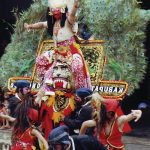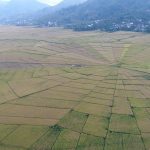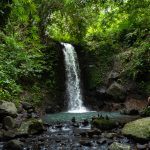Hammerhead Shark Research Expedition in the Banda Sea: A 2017 Adventure
In September 2017, our team of amateur marine biology enthusiasts and passionate divers embarked on a thrilling 14-day expedition across the Banda Sea. Our mission: to study and document the elusive scalloped hammerhead sharks while exploring the rich biodiversity of this remote Indonesian paradise.
Setting Sail from Alor
We departed from Alor, filled with excitement and anticipation. Our liveaboard, The Jaya, would be our home for the next two weeks as we traversed the Banda Sea in search of hammerheads and other marine wonders.
First Encounters
Our patience was rewarded on day three when we reached Serua Island. As we descended into the blue, four hammerheads appeared, swimming together in the shallower waters. This unexpected sighting at a lesser depth than anticipated sparked discussions among our team about the sharks’ behavior patterns.
While we were thrilled to encounter these magnificent creatures, we quickly realized that our equipment and the depth of the dives limited our ability to capture high-quality footage. Despite this challenge, the experience of witnessing these sharks in their natural habitat was truly awe-inspiring.
The footage we got – well it wasn’t spectacular. Honestly – we are passionate divers and not media people. Let’s fix this next time!
Research Activities
Throughout the expedition, we conducted various research activities to the best of our abilities:
- Photo-identification attempts: We tried to capture images of hammerheads to identify individuals and estimate population sizes, but the quality was often compromised due to depth and lighting conditions.
- Behavioral observations: We recorded the sharks’ movements, social interactions, and feeding patterns as accurately as possible given our limitations.
- Environmental data collection: We logged water temperatures, currents, and other factors that might influence hammerhead presence.
Educational Moments
Between dives, our more knowledgeable team members held informative sessions on hammerhead biology, threats to their survival, and conservation efforts. These presentations fostered engaging discussions among the expedition members, enhancing everyone’s understanding of these magnificent creatures.
Unexpected Encounters
While hammerheads were our primary focus, the Banda Sea offered numerous surprises. At Nyata Island, we encountered two oceanic whitetip sharks, a rare and thrilling sight. Later, near Hatta Island, we observed a solitary hammerhead and a mobula ray, showcasing the diverse marine life in these waters.
Despite our excitement, we were constantly reminded of our limitations in capturing these moments. The poor visibility and our basic equipment meant that much of what we saw remained etched in our memories rather than on camera.
Conservation in Action
Our expedition wasn’t just about observation. We engaged with local communities to discuss sustainable fishing practices and the importance of protecting hammerhead habitats. These interactions provided valuable insights into the challenges and opportunities for marine conservation in the region.
Banda Neira: A Historical Interlude
Midway through our journey, we visited the historic spice island of Banda Neira. This break from diving allowed us to explore the island’s rich colonial history and understand the human context of our marine research area.
Final Hammerhead Encounters
Our expedition culminated with spectacular hammerhead sightings near Hatta Island. Here, we witnessed schools of these magnificent sharks, sometimes numbering over 100 individuals. These encounters provided crucial data for our research on hammerhead aggregation behaviors.
The sheer number of sharks was overwhelming, and while our footage didn’t do justice to the spectacle, the memory of being surrounded by these graceful predators will stay with us forever.
Lessons Learned
As our expedition came to a close, we reflected on the valuable lessons learned:
- Professional equipment: We realized the importance of having professional-grade underwater cameras and lighting equipment to capture high-quality footage in deep-water conditions.
- Certified marine biologists: While our enthusiasm was high, we recognized the need for certified Indonesian marine biologists on future expeditions. Their expertise would ensure more accurate data collection and compliance with current Indonesian laws regarding marine research. This crucial fact came to light later on – when it turns out that much of the data we collected could not be used in official documents supplied to the Indonesian government…as our staff had work permits as diving instructors, but not as scientists. What a bummer!
- Data collection protocols: We learned that establishing standardized data collection methods before the expedition would have improved the consistency and reliability of our observations.
- Local partnerships: Building stronger relationships with local marine research institutions could enhance the scientific value of future expeditions and contribute more effectively to conservation efforts.
- Safety considerations: The challenging diving conditions reinforced the importance of thorough safety protocols and having experienced dive masters on board.
Looking to the Future – Hammerhead Diving
Despite the challenges and limitations we faced, our 2017 Banda Sea expedition was an incredible success in terms of personal growth, marine education, and fostering a deeper appreciation for ocean conservation.
Our amateur team’s observations, while not scientifically rigorous, provided valuable insights into hammerhead shark behavior and distribution in the Banda Sea. We hope that our experiences will inspire more professional research expeditions in the future.
Moving forward, we plan to:
- Collaborate with professional marine biologists (for data usable by official bodies) and underwater videographers (for much better footage!) for future expeditions.
- Invest in better equipment to capture high-quality underwater footage.
- Develop stronger partnerships with Indonesian research institutions and local communities.
- Implement more structured data collection methods aligned with current scientific standards.
- Continue raising awareness about the importance of hammerhead shark conservation.
Conclusion
As our 2017 Banda Sea expedition came to a close, we reflected on the wealth of experiences gained, the unforgettable underwater encounters, and the friendships forged. While our amateur status and equipment limitations prevented us from collecting professional-grade data, our expedition nonetheless contributed to the growing body of knowledge about hammerhead sharks in the region.
We left the Banda Sea with a renewed commitment to ocean conservation and a deep appreciation for the complex ecosystems that support these magnificent creatures. The challenges we faced only strengthened our resolve to return better prepared and to contribute more significantly to hammerhead shark research and protection.
Everyone on board The Jaya had an amazing time, from the thrilling shark encounters to the camaraderie developed over two weeks at sea. The expedition not only met but exceeded our expectations, leaving us all eager to participate in future research trips.
As we disembarked in Alor, our hearts were full of gratitude for the incredible experiences we had shared. We look forward to future expeditions, armed with the lessons learned and a burning passion to continue exploring and protecting the wonders of the underwater world.
This amateur expedition proved that marine research can be both personally rewarding and contribute to the broader understanding of our oceans, even if in small ways. It reinforced the importance of protecting these incredible animals and their habitats, inspiring us all to become better stewards of the sea.
As we plan for future expeditions, we’re excited about the prospect of combining our enthusiasm with professional expertise to make even more significant contributions to hammerhead shark conservation. Until then, the memories of our encounters in the Banda Sea will continue to fuel our passion for marine life and drive our efforts to protect these magnificent creatures for generations to come.




